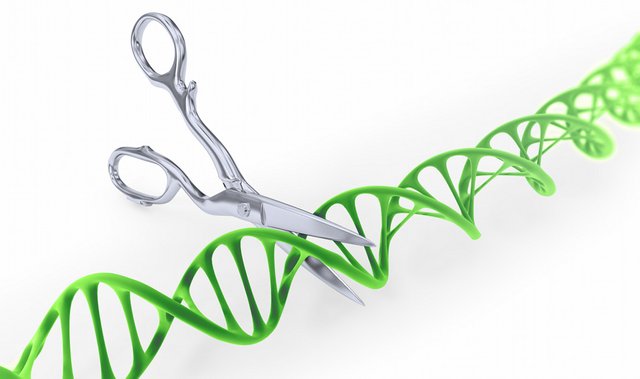Undesirable Jumps of CRISPR-Cas9
CRISPR, a new brand of cereals? No, this little crunchy word refers to a bacterial immune defense system that has been revolutionizing genetics for a number of years by providing a simple and accurate tool for editing the genome of any cell. To what extent? However, this is the issue recently raised by Haiwei Mou and Jordan Smith of the University of Massachusetts in Worcester, USA and their colleagues, showing that this technique has some rather problematic adverse effects: jumps Involuntary when the cell starts to read and translate its genome.

source
In bacteria, CRISPR is a region of the genome that constitutes a sort of library of DNA fragments from the viruses encountered. In the event of a new viral infection, the bacteria compare virus DNA (bacterial viruses, bacteriophages, introduce their DNA into bacteria and use their molecular arsenal to replicate) to the fragments of their library. If a sequence is recognized, an enzyme, named Cas9, cuts the viral DNA in this sequence, which destroys it and thus avoids the invasion of the bacterial genome.
Today, many biologists are diverting this mechanism to cut the DNA cells in a targeted location. The technique, called CRISPR-Cas9, consists in associating with the enzyme Cas9 a guide - a small RNA recognizing the region of the genome to be modified and built on the same model as that guiding Cas9 in bacteria. The enzyme Cas9 then cuts the DNA at the target site, which triggers its repair, either by gluing the two separated ends or by recombination with a synthetic homologous DNA fragment introduced into the cell.
Biologists know that the guide can recognize other sequences resembling its target and, as a result, develop techniques to limit this type of error. But Haiwei Mou, Jordan Smith and their colleagues have highlighted another difficulty. Usually, when a eukaryotic gene is transcribed into messenger RNA (the intermediate that will be translated into protein), some fragments of its sequence, called introns, are eliminated, while others, the exons, are conserved. This "splicing" is fundamental, because the protein produced depends on the conserved fragments. Alternative splicing is thus used by eucarytes to diversify the production of proteins or to regulate the expression of genes by small RNAs. Also with about 20,000 genes, The human genome can produce several tens of thousands of proteins in addition. Haiwei Mou and his colleagues have shown that the CRISPR-Cas9 technique produces unwanted and not always easy to detect splices, leading to aberrant proteins.
They used the CRISPR-Cas9 technique to produce, from a mouse cancer cell line, two lines where one gene was modified: in one, a nucleotide was eliminated in an exon of the gene; In the other, two nucleotides of the exon. In cells, genes are read by triplets of nucleotides: each triplet encodes an amino acid, and all the amino acids thus produced from a gene form a protein. Thus, by deleting only one or two nucleotides, the reading of the modified gene is shifted so that, in most cases, the mutation cancels its expression. It was the desired effect here. However, in many of the cells of both lines, instead of nullifying gene expression, these mutations resulted in the suppression of only the modified exon - and the production of a truncated protein.
Better, by mutating an exon encoding another protein, β-catenin, they showed that not only was this exon frequently suppressed, but the protein produced was still functional ... and at the wrong place in the cell. In addition, exons neighboring the mutated were also affected.
In other words, a gene mutated so that it is no longer expressed can produce an active protein with perturbed functions. How? That is the whole question. These small mutations could accidentally introduce elements that label the exon as having to be omitted or, on the contrary, disrupt the signage which favors its splicing ... In the meantime, the search for involuntary exon omissions will have to be part of the Necessary controls when using CRISPR.